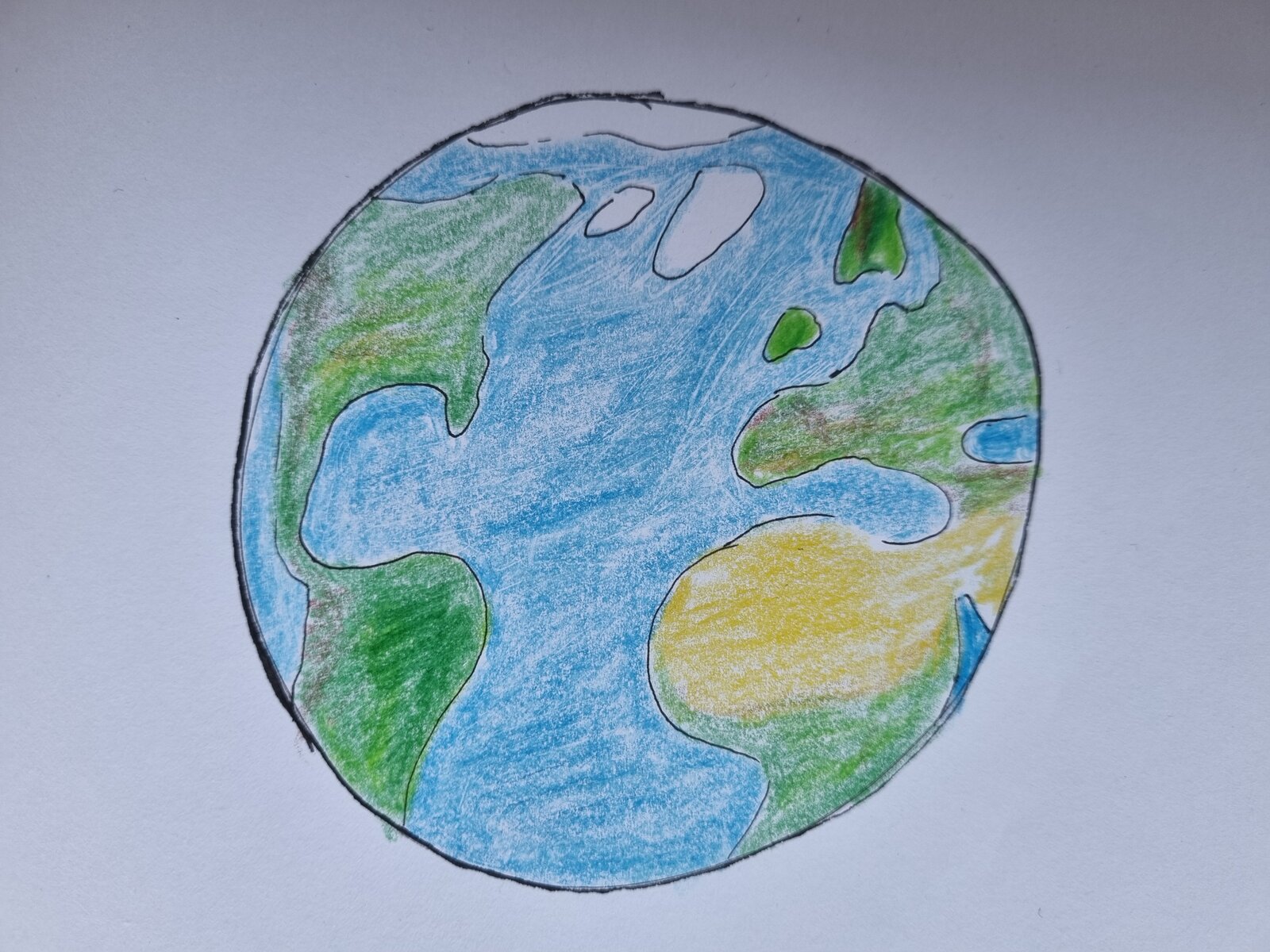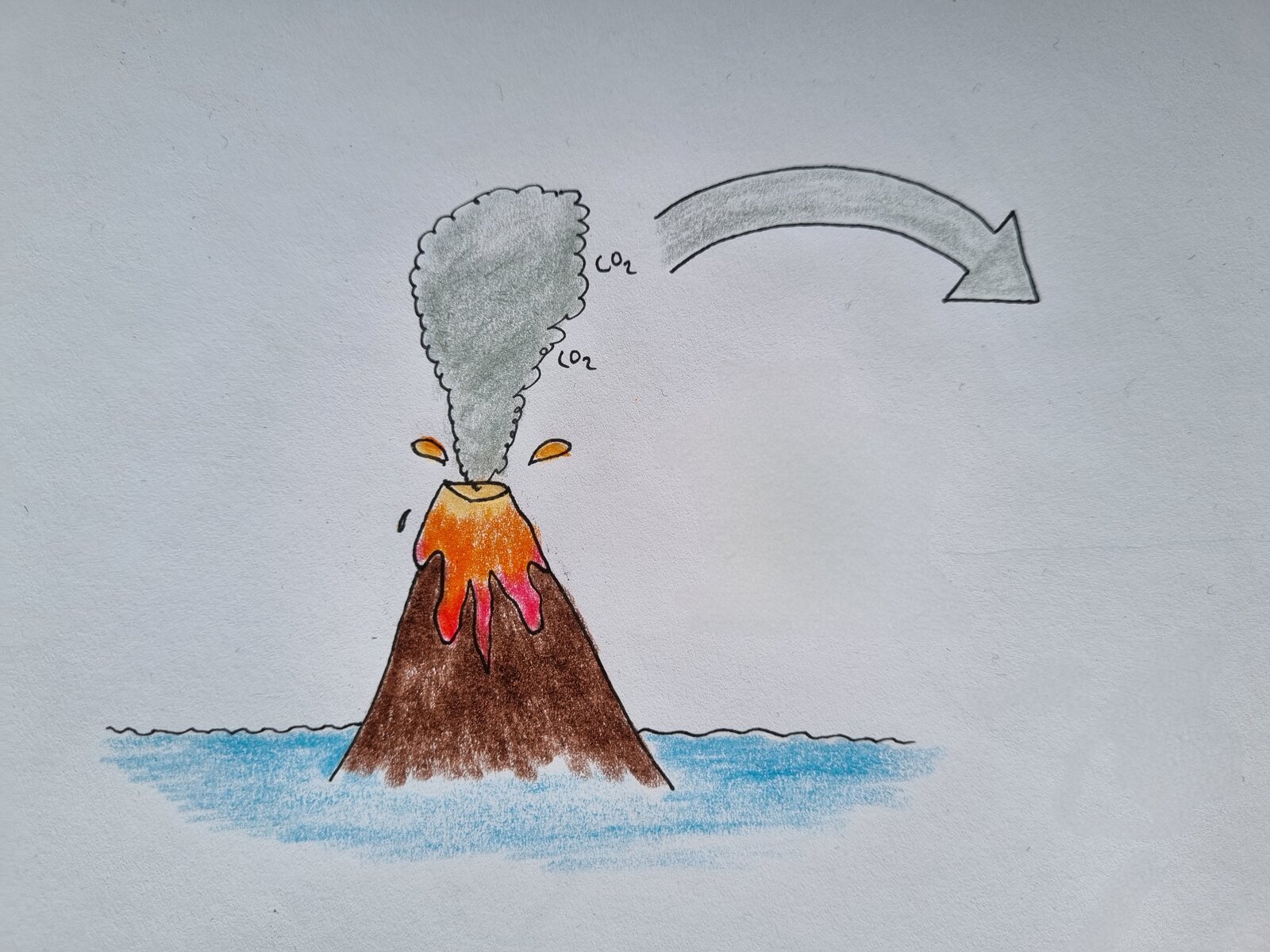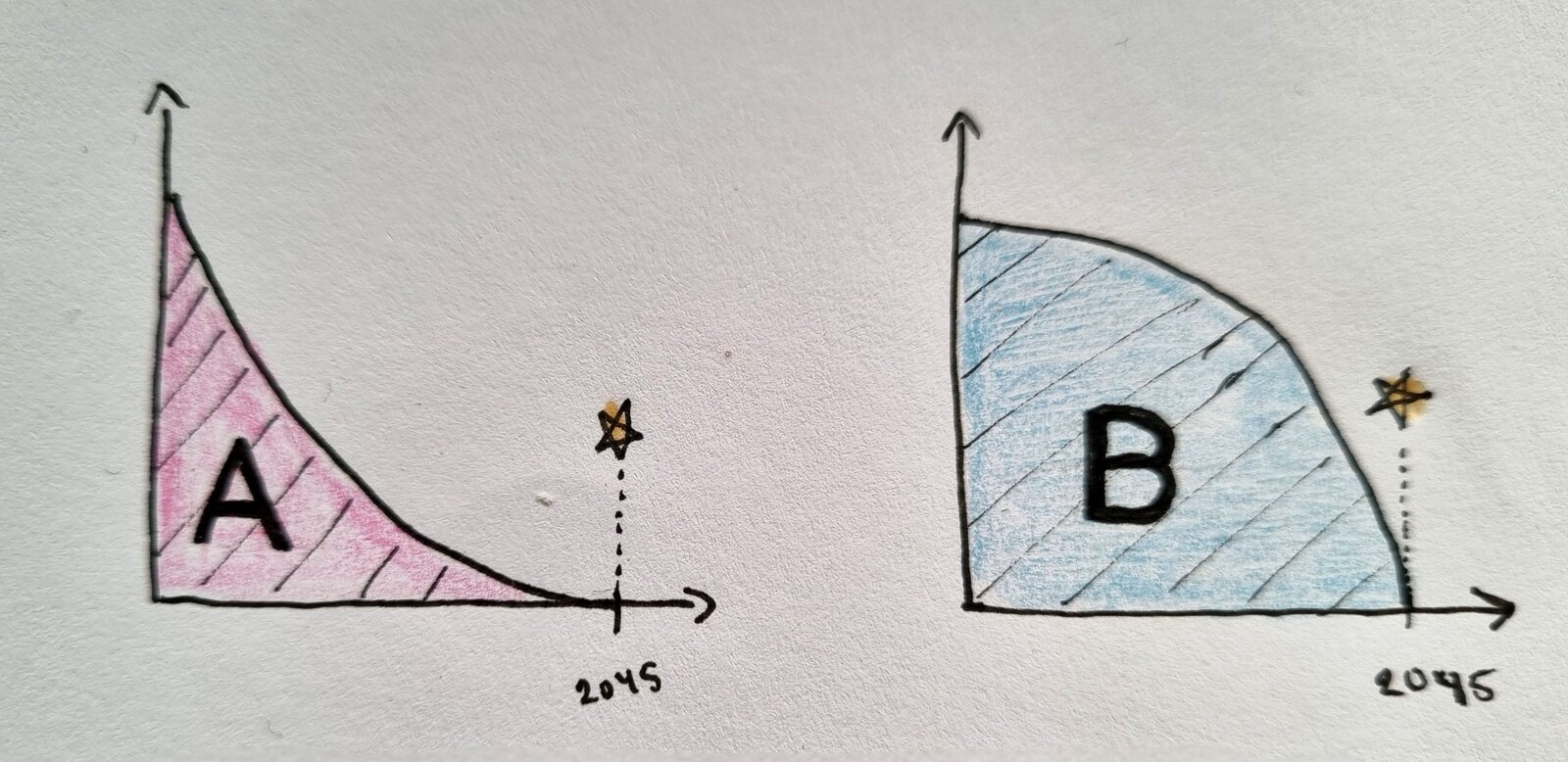Things I wish everyone knew about climate change
2025-01-13 · Translated from Swedish original
Here’s a compilation of some things I wish everyone knew about climate change. It’s largely based on insights I gained during my time at Klimatsekretariatet (The Climate Secretariat) where I work part-time. I hope you find something new and interesting!
Three factors that control the climate
This might feel too basic, but let’s start with the fundamentals: What determines the climate on a planet? Take a moment to think about it before reading on.

To begin with, the climate is naturally affected by the amount of solar energy reaching Earth. This is determined by the Sun’s strength and the distance to it. Therefore:
1. Increased solar radiation leads to a warmer climate.
Furthermore, of the solar energy that reaches the planet, a certain portion bounces straight back into space. Ice and snow reflect more light than darker materials like water, forests, and bare ground. The proportion of solar energy that’s reflected is called the planet’s albedo. An albedo of 1.0 means all solar energy is reflected, while 0.0 means none is reflected. Earth’s average albedo is 0.3.
2. Higher albedo leads to a colder climate.
The solar radiation that reaches Earth (point 1) and isn’t reflected back (point 2) will warm our planet. But as anyone who’s been outside on a sunny winter day knows, we don’t just receive energy, we also leak it. That’s why we wear winter jackets. Earth’s surface radiates heat. In the atmosphere, there are gases that trap this outgoing heat radiation. Their presence makes the atmosphere function like a greenhouse, which is why we call them greenhouse gases.
3. More greenhouse gases lead to a warmer climate.
Carbon dioxide is a long-lived gas
Carbon dioxide is a long-lived gas. This might sound strange in light of what we learned in school: humans and animals exhale carbon dioxide while trees and other plants absorb it in what we call photosynthesis. That happens pretty quickly, right? Yes, but an important detail in this context is that this biological carbon cycle is generally in balance - the amount of carbon dioxide released by organisms roughly matches the amount absorbed by other organisms.
There’s another carbon cycle that fewer people know about. Carbon dioxide in the air causes rocks to slowly weather and form clay. In the same process, water-soluble bicarbonates are formed, which eventually flow into the great oceans. In the oceans, a reaction occurs that forms limestone. The limestone sinks to the depths and there, on the ocean floor, it rests until one day, due to the movement of continental plates, it meets hot magma. The final step in the chain of events is a volcanic eruption through which the carbon dioxide returns to the atmosphere. The circle is complete, but it happens over incomprehensible time spans.1

The carbon dioxide that we are currently pouring into the atmosphere will, to a significant extent, become part of this geological cycle. The good news is that the carbon dioxide from yesterday’s car ride will eventually disappear from the atmosphere on its own. The problem is that you need to wait for mountains to weather away.
Carbon dioxide molecules that your grandfather released with his first car are still present in the atmosphere. Carbon dioxide molecules that you release now will still be there when your grandchildren are walking around with their grandchildren. And long after that.
A budget perspective on emissions
Turn off the tap!
One consequence of carbon dioxide’s long lifetime is that it accumulates in the atmosphere. The level continues to increase as long as we emit, even if we do so at a slower rate. Even if we halve emissions, the concentration of carbon dioxide will continue to rise. The image you should have in mind is that of a bathtub. As long as the tap is open, the water level will rise. The tap must be turned off completely for the increase to stop.
Carbon budgets
So how much room do we have left before the bathtub overflows? IPCC actually answers this question with as much precision as possible. They regularly publish a set of global carbon budgets that describe how many tons of carbon dioxide we have left to emit if we want to stay below a certain global temperature rise with a certain probability.
| Temperature / Gt CO₂ | 17% | 33% | 50% | 67% | 83% |
|---|---|---|---|---|---|
| 1.5°C | 900 | 650 | 500 | 400 | 300 |
| 1.7°C | 1450 | 1050 | 850 | 700 | 550 |
| 2.0°C | 2300 | 1700 | 1350 | 1150 | 900 |
IPCC AR6 Working Group 1 Technical Summary (Table TS.3) Page 98
So for example, if we want a 67% chance of staying below 1.7 degrees of warming, we have 700 Gt CO₂ carbon dioxide left to emit. The budgets above were valid from January 2020. Since we emit about 40 Gt CO₂ each year, we have already used up about 200 Gt CO₂ of the above budgets.
The journey is the destination
The Paris Agreement is formulated in relation to temperatures: “…well below 2°C and … efforts for … 1.5°C”. The Paris Agreement can therefore be linked to one or more of the global carbon budgets that IPCC publishes. This can be contrasted with Sweden’s climate goals adopted in 2017: ”[no] net emissions of greenhouse gases to the atmosphere by 2045 at the latest”2. Sweden’s climate goals don’t start from any temperature target, but instead a snapshot of annual emissions in a distant future. But since it’s the total amount of emissions over time that determines how strong the greenhouse effect becomes, it’s more important to keep track of what happens up until 2044 than what happens just in 2045. In this case, the journey really is the destination - at least for those interested in limiting Earth’s warming.

This is an important difference. One can talk about climate goals needing to be more ambitious, but that’s not the message here. The point here is that the goals aren’t even formulated correctly. We needed goals that described the entire journey - not just the final destination. And it would have made a difference. Such a goal would have made visible that each year of delay makes the task harder if we want to stay below a certain temperature (which Sweden has signed up to, through the Paris Agreement). We would have talked more about how to reduce emissions now, instead of in 20 years.
Milestone targets
However, it’s not quite as bad as I’ve described. Sweden’s climate goals (which were voted through by all parties except the far-right SD3) also include the following milestone targets:
- Emissions in 2020 should be 40 percent lower than emissions in 1990
- Emissions in 2030 should be 63 percent lower than emissions in 1990
- Emissions in 2040 should be 75 percent lower than emissions in 1990
When you plot these milestone targets on a graph, something that resembles a carbon budget actually starts to emerge4. The arbitrariness decreases and the need for quick action becomes more visible. The significance of the milestone targets is something to keep in mind when you in coming years will likely hear political parties suggest that we might skip the milestone targets and aim for 2045 instead. In the climate match, the journey is the destination - anything else is ignorant or dishonest.
We must weigh things against each other
The global carbon budget must cover everything. By definition, we have nothing that can fall outside it. In today’s debate about phasing out fossil fuels, the tractor in the potato field has unfortunately ended up in the same corner as the SUV in Danderyd. Motorists unite in the fight against fuel taxes whether they live in Gothenburg or in a village between Bollnäs and Ljusdal.
Here are two statements - do you agree?
- Some emissions are more necessary than others
- It’s differently difficult to transition depending on where you live
All emission sources compete for the same emission space. Emission sources are in conflict with each other. If we in the city are bad at breaking car dependency, there will be less budget space left for the farmer or the rural resident. Since we compete for the same fuels in a common market, it also becomes more expensive for them. We need to start a conversation about what should come first. Tractor or SUV, charter flights or ambulance flights?
You can’t dodge the justice question
In economic theory, there’s an idea that growth benefits everyone. That it doesn’t matter if the rich get richer as it leads to the poor also getting better off. One can have objections to that view of reality (on good grounds), but in the climate match we can in any case note the following: it’s never good for others when a person flies to Dubai and spends from the common carbon budget. We have a shared bowl of chips. If some people stuff themselves handful after handful before the movie even starts, there will be less left for the rest of us. It’s that simple.
Here are three statements - do you agree?
- Those who have the most are those who have the best conditions to transition
- Those who have the most are probably those who emit the most
- Those who have the most are those who are least exposed to risk
Knowledge of the common carbon budget makes it harder to dodge the justice question. We have different possibilities and different responsibilities. This is true between countries, but also within countries.
Tipping points exist
The world is rarely linear. When we rock in a canoe, it sways back and forth until we reach a point where it suddenly capsizes. When we bend a stick, it gives gradually until it suddenly breaks without warning. Similarly, the climate system contains thresholds where gradual changes can trigger new mechanisms:
- Arctic ice reflects sunlight. When it melts, the Earth becomes darker (albedo decreases) and more heat is absorbed, which melts even more ice in a self-reinforcing cycle
- In permafrost, there are large amounts of the greenhouse gas methane. When the ground thaws due to warmth, these can leak out and enhance the warming
- Forests absorb carbon, but drought and fires can turn them from carbon sinks to carbon sources which further fuels the warming
When a system passes such a threshold, it’s called a “tipping point”. Changes can be irreversible on human timescales. The planet can, like the canoe, seek a new equilibrium. Knowledge of the existence of tipping points should lead to humility and caution.
Part of a larger polycrisis
Climate change is just one of several planetary boundaries that our modern society exceeds or is close to exceeding5. We leave an enormous footprint on our planet. The amount of wild mammals has dropped drastically. We have a mass death of bees, butterflies, and other insects - nearly half of the world’s insect species are threatened with extinction6. Seas are bottom trawled and filled instead with microplastics. World food production is affected on land and at sea. Forever chemicals like PFAS are found in our Swedish lakes, in our rainwater, and our beloved children’s bodies. All of this will continue to be true even if carbon dioxide emissions drastically decrease.
Here are two statements - do you agree?
- We shouldn’t solve the climate crisis by worsening other crises
- It would be desirable to address the underlying drivers and structures causing all these crises, instead of handling them one by one
Footnotes
- Alasdair Skelton, https://vimeo.com/846841874↩
- Swedish Environmental Protection Agency, https://www.naturvardsverket.se/amnesomraden/klimatomstallningen/sveriges-klimatarbete/sveriges-klimatmal-och-klimatpolitiska-ramverk/↩
- https://sv.wikipedia.org/wiki/Klimatlagen#Historik↩
- A “true” carbon budget would however entail that subsequent milestone targets are revised depending on how previous years went since you need to stay within a given amount. Such feedback occurs automatically if you formulate the goal as a budget, but it’s missing for Sweden’s milestone targets.↩
- Strongly recommend this conversation between Kevin Anderson and Johan Rockström: https://www.youtube.com/watch?v=lLq8e73-FAw↩
- https://www.svt.se/nyheter/utrikes/massdod-av-insekter-i-varlden-men-forskningen-otillracklig↩